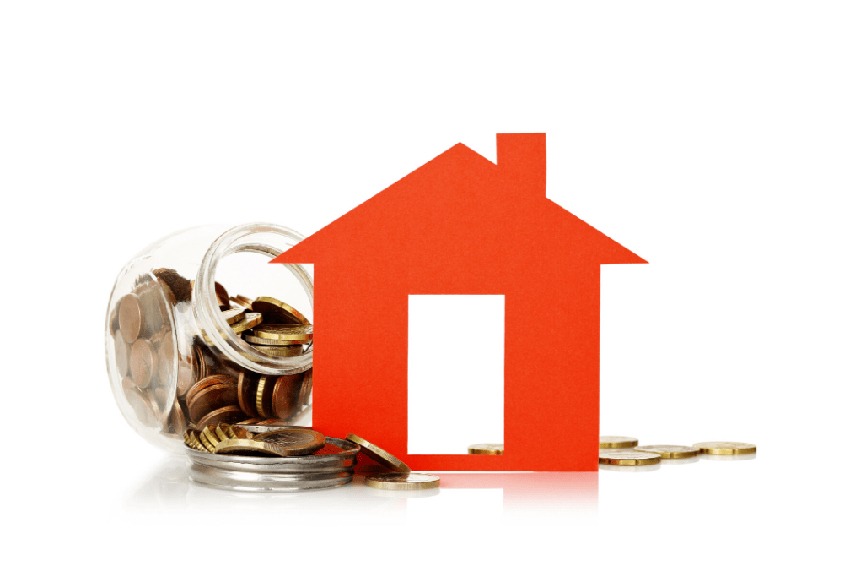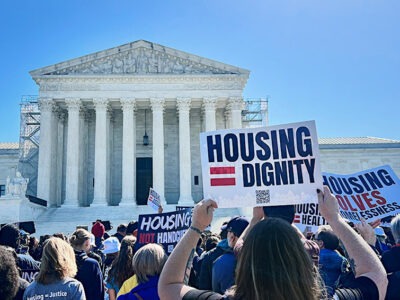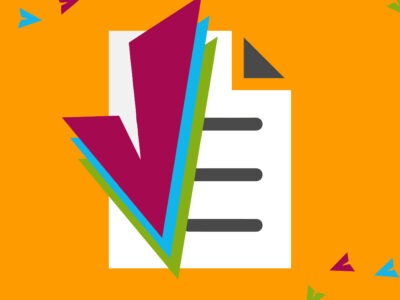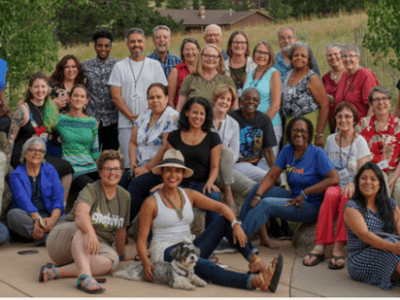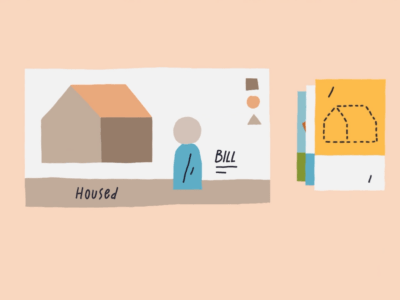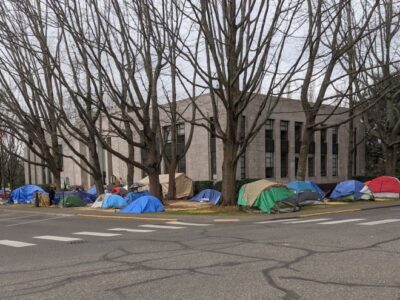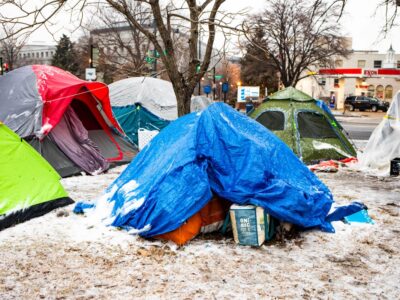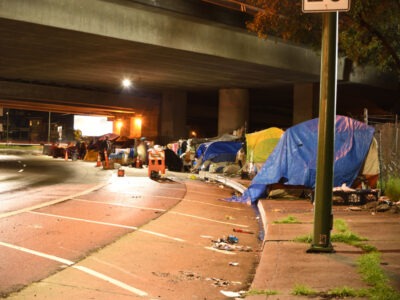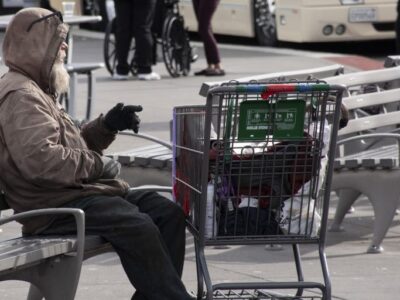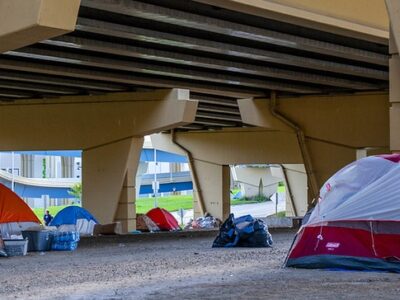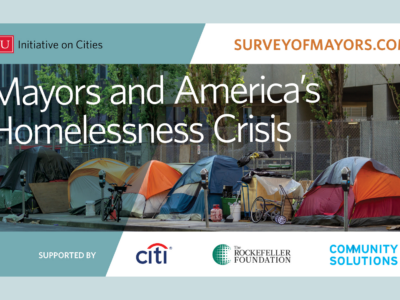When Congress passed the CARES Act on March 27, they funded $2 trillion in economic relief to businesses, nonprofits, and families, as well as funding for critical sectors like health care, housing, and education. The CARES Act also included $45 billion for the Federal Emergency Management Agency (FEMA) to support communities as they respond to the COVID-19 pandemic.
FEMA plays a critical role helping communities respond to and recover from disasters — typically natural disasters such as hurricanes, floods, and tornados. However, during the COVID-19 pandemic response, Congress gave FEMA the flexibility to help local, state, and tribal governments provide housing options for people at risk of and experiencing homelessness who are impacted by the coronavirus.
Below are a few basics about this new FEMA funding and how homeless response providers can prepare to access it.
What type of FEMA funds are available and who applies for them?
There are a few ways that FEMA provides support during and after disasters. Under President Trump’s Nationwide Emergency Declaration for Coronavirus 2019, all states are eligible to apply for these funds.
1. Public Assistance
This type of assistance is provided to local, state, and tribal governments and certain private nonprofit organizations to help recover after a disaster. While these funds typically go towards rebuilding roads, buildings, and other infrastructure, FEMA is allowing governments to use the funds to provide housing options to people at risk of and experiencing homelessness who are impacted by the coronavirus.
- Local, state, and tribal governments can subcontract organizations to deliver services and provide housing.
- FEMA will reimburse 75% of eligible costs, so organizations must be able to cover the other 25%.
2. Individual Assistance
This type of assistance is provided directly to families and individuals to receive funding for damaged property. This type of assistance is not currently available during this disaster.
What types of housing can FEMA funds be used for?
FEMA has seven categories of funding for Public Assistance. For the current pandemic, local, state, and tribal governments can apply for Category B, which provides funding for emergency protective measures. These funds can be used to provide housing options for people at risk of and experiencing homelessness who are impacted by the coronavirus.
Under Category B, governments can be reimbursed for:Medical supplies, including personal protective equipment, and the purchase and distribution of supplies such as food, water, ice, etc. Other eligible activities are listed here.
Non-congregate housing or “medical sheltering” for specific populations:
- Those who test positive for COVID-19 who do not require hospitalization but need isolation
- Those who have been exposed to COVID-19 who do not require hospitalization
- High-risk individuals (such as people over age 65, those with underlying medical conditions) needing social distancing or isolation to prevent contracting the illness
In order for non-congregate housing to be reimbursed, a local, state, or tribal public health official must certify the need for isolation or quarantine for non-congregant sheltering and support services. Please consult FEMA’s Frequently Asked Questions for more details.
Remember that FEMA will reimburse 75% of eligible costs, so organizations must be able to cover the other 25%.
How can homeless service providers or housing organizations prepare for FEMA funding?
Close coordination between government agencies and the homeless response system is essential to reduce the impact of this pandemic on people at risk of and experiencing homelessness — and those who serve them. Here are a few suggestions based on feedback we have heard from our community partners.
- Connect with your local or state emergency response agency, state housing agency, and local public health to let them know you want to be part of your local FEMA response plan.
- You may also want to learn about your FEMA Regional Public Assistance Lead
- You may also want to learn about your FEMA Regional Public Assistance Lead
- Start drafting your justification of why your organization is using non-congregate housing, what other options you considered, and what safety concerns you took into consideration. Try to use FEMA language and concepts, such as:
- Emergency Protective Measures: to save lives and protect public health and safety
- Hospital Surge Prevention: to prevent unnecessary surges for your local health care system
- Infection Control Strategy: coordinated strategy to reduce spread in the community
- Consider what costs you are expecting and provide a cost-estimate.
- Carefully track all costs associated and keep receipts (staff time, costs of supplies, contracts, etc).
- Get your systems in place
- Create a system to track expenses and financial controls to prevent duplication of funding requests
- Create an assessment tool to deploy quickly to correctly route individuals into the correct type of housing (congregate, medical sheltering, etc.)
- Be sure to capture data on the individuals you served; you may want to use HMIS data, if needed.
Please note:
- Be sure you are not submitting duplicate reimbursement requests. Some activities may be eligible for funding through HUD, HHS, or CDC funding sources. Map out your activities and funding sources to leverage and maximize funding.
- States typically reimburse funds every 30 days, but be sure to confirm with your local agencies.
- FEMA will reimburse 75% of eligible costs, so organizations must be able to cover the other 25%.
- Here are a few examples of state applications: Massachusetts, North Carolina, and Ohio.
FEMA resources:
- FEMA’s home page
- Coronavirus (COVID-19) Pandemic: Non-Congregate Sheltering (FAQ)
- Coronavirus (COVID-19) Pandemic: Eligible Emergency Protective Measures (Factsheet)
- Public Assistance: Local, State, Tribal and Private Non-Profit
- FEMA’s Emergency Food and Shelter Program (Factsheet)
- FEMA’s regional offices
Other resources:
- HUD Technical Assistance (TA) is available through the SNAPS Disaster Technical Assistance team
- USICH COVID-19 Funding Flexibilities and Waivers (overview)
- NLIHC Working with FEMA in COVID Pandemic toolkit
